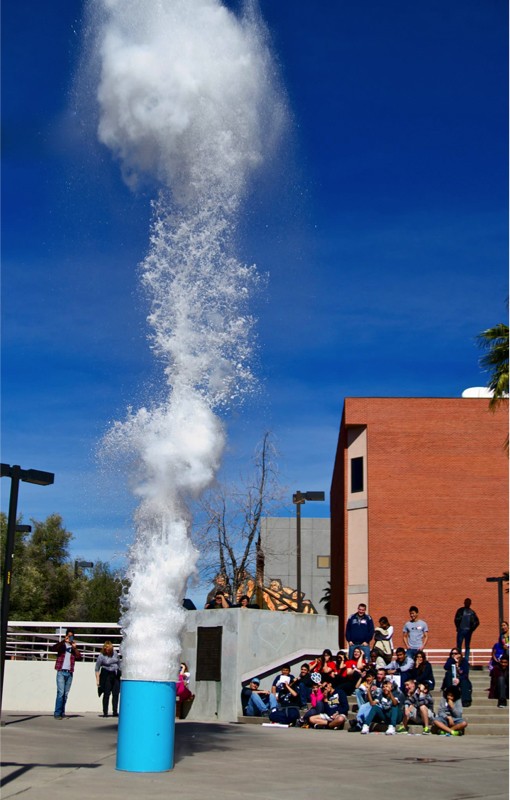One of Tucson’s classic attractions, the annual Festival of the Books, is known for working closely with UA departments to form community outreach opportunities. Science City is one of these outreach opportunities. In fact, it is the largest science event held in the state.
Science City is broken into neighborhoods: exploring science in art, food, everyday life, the natural world, the science of tomorrow and the science of you. It houses departments ranging from the UA Physics Department to the Department of Geosciences.
The geosciences department in particular runs a demonstration that is of interest to anyone looking to learn more about volcanoes or anyone who wants to look at a cool explosion. This demonstration includes a model volcano that erupts using the power of liquid nitrogen. The liquid nitrogen volcano is a project that the geosciences department has run for several years.
Shelby Rader, a geoscience graduate student and the coordinator of the project, elaborated on some of the logistics of the volcano. It is constructed out of a 55-gallon drum that is about 3-feet tall and is filled almost all the way with about 40 gallons of water, according to Rader.
Liquid nitrogen is put in a 2-liter bottle, which is then placed in a metal cage to weight the bottle. When the bottle is dropped into the drum, pressure builds up and eventually rips the bottle, blowing the water up to 40 feet in the air and mimicking a volcanic explosion.
The boiling temperature of liquid nitrogen is around negative 320 degrees Fahrenheit. Its expansion ratio is large, meaning that when it boils, the gas expands to fill a space quickly. If the gas is contained, it can result in an explosion like the one seen in the volcano demonstration.
“There’s a 15 or 20-second lag time,” Rader said. “It’s long enough that most people don’t think anything is going to happen and then the water goes way higher than they are expecting it to.”
The water from the blast can be carried anywhere from 50-70 feet downwind and the energy from the explosion can lift the barrel up to three feet on a windy day.
The scale of the explosion isn’t the only way that the department educates participants about how volcanoes work. Other things are put inside the drum to represent the various materials present in a volcanic eruption, according to Rader.
Styrofoam packing peanuts, for example, are used to represent ash, tennis balls represent chunks of rock and plastic eggs stand for the more porous rock that is found in an eruption.
“I, personally, am biased. I love the volcano,” Rader said. “Obviously you can’t see a real volcano in Tucson, but our goal is to give experience with how a volcano works in any way we can.”
Visitors can see the volcano erupt at 11 p.m., 1 p.m. and 3 p.m., Saturday and Sunday in the Science of the Natural World neighborhood of Science City. In addition, there will be other forms of outreach available from the department, such as a mock dinosaur dig and a stream table.
Follow Maddie Pickens on Twitter.









